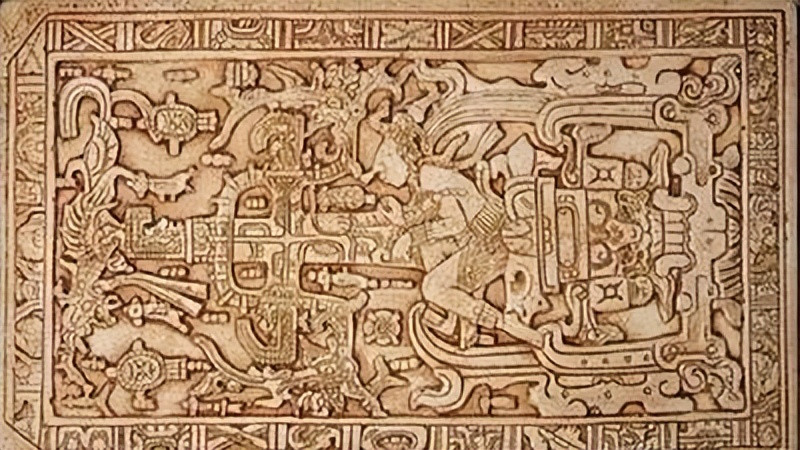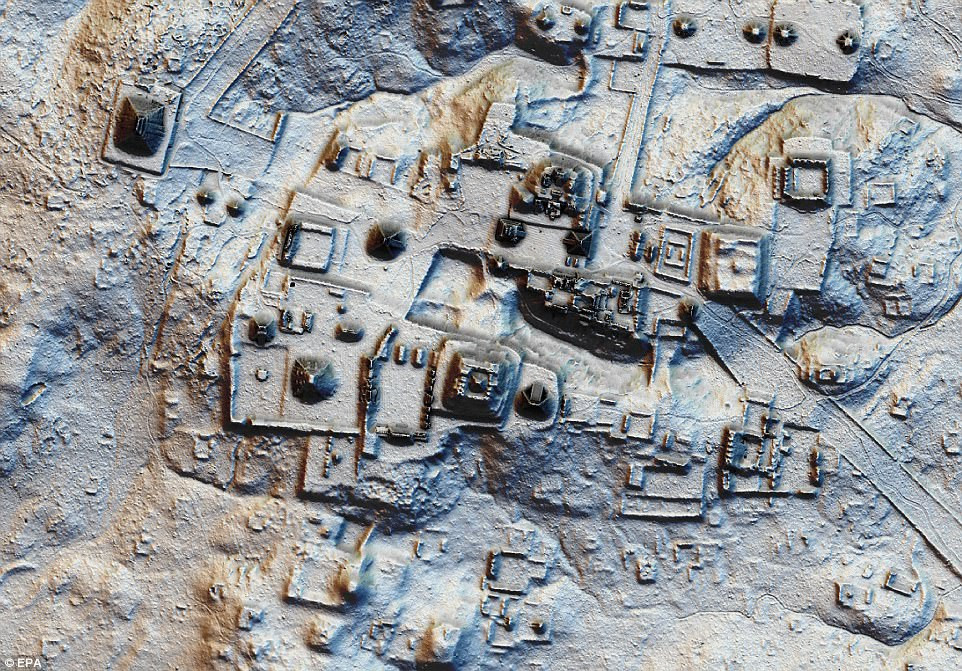Researchers excavating the ancient Mayan city of Dzibanché, on Mexico’s border with Belize, have uncovered a rare set of stucco reliefs that shed light on one of the region’s powerful 1st millennia dynasties. The Kaanu’l dynasty conquered and ruled over an area today comprising much of Mexico, Belize, and Guatemala between 250 and 650 C.E. As with all pre-Hispanic Mayan societies, the Kaanu’l believed they were the earthly representatives of the gods and took the snake as their symbol.
It was the presence of intertwined snakes in the imagery of the new stucco reliefs that allowed researchers to identify the dynasty as the force behind them. The three ancient artworks were found affixed to two platforms near an area used for a ball game, the likes of which were popular across much of the Mayan culture’s 3,000-year history. It’s believed the newly found Mayan reliefs date from between 500 and 600 C.E.
The discovery of the Mayan reliefs, which contain representations of ancestors, mythical animals, and constellations, has been hailed as a significant breakthrough in understanding the Kaanu’l dynasty. The reliefs were discovered by a team from the National Institute of Anthropology and History (INAH), who have been working in the Dzibanché Archaeological Zone since 2023.
Deciphering the Kaanu'l Dynasty Through Ancient Reliefs
The reliefs reveal three distinct scenes. The first depicts two guardians flanking a pedestal intended for a sculpture, and inscribed glyphs referring to a Kaanu'l ruler. In the second relief, individuals allude to Kaanu'l ancestors amid symbols of stars and serpents, common in Maya and Teotihuacan iconography, while the third scene displays mythical animals associated with constellations.
The Significance of the Intertwined Serpent
A recurring motif in all three reliefs is the intertwined serpent, symbolizing the Kaanu'l rulers’ divine lineage and their status as earthly representatives of the gods. The Kaanu'l believed they were the earthly representatives of the gods and took the snake as their symbol. This is consistent with other Mayan iconography, where the serpent is often associated with power, fertility, and the underworld. The presence of intertwined snakes in the imagery of the new stucco reliefs is a key element that connects the reliefs to the Kaanu'l dynasty and their beliefs. The discovery of these reliefs, which contain representations of ancestors, mythical animals, and constellations, has been hailed as a significant breakthrough in understanding the Kaanu’l dynasty. The reliefs were discovered by a team from the National Institute of Anthropology and History (INAH), who have been working in the Dzibanché Archaeological Zone since 2023.
Unraveling the Past: The Importance of Conservation
Finding and preserving Mayan reliefs has been one of the focus areas for the 100-person team that has been working inside the Archaeological Zone of Dzibanché since the end of 2023. Made of a lime gravel mixture called sascab, which the Maya used as mortar, the stuccos are vulnerable to weathering. Much of their vibrant original coloration has been lost. One initiative of researchers is to photograph the reliefs so that accurate photogrammetric models can be made. This will allow researchers to study the reliefs in detail without risking damage to the originals. The reliefs are crafted from lime mortar and stone dust with vivid red, blue, yellow, and black paint remnants, and require careful restoration due to their exposure to weathering.
The Legacy of the Kaanu'l Dynasty
This site, inhabited by the Kaanu'l in the Early and Late Classic periods (AD 250-650), served as a powerful cultural and military center until the dynasty split, with one faction remaining in Dzibanché and another moving to Calakmul. As Balanzario Granados explained, “Dzibanché is rich in buildings and offerings that narrate the beliefs and military achievements of this powerful lineage.” The Kaanu'l dynasty eventually disintegrated and split into two groups — one remained in the Dzibanché settlement while the other settled in Calakmul, a city located in today’s state of Campeche. This division marked a significant shift in the region’s political landscape. The Kaanu'l dynasty was a powerful force in Mayan history, and these new discoveries are helping archaeologists to better understand their beliefs and their legacy.
Dzibanché: A Window to the Past
The ongoing work at Dzibanché, facilitated by the Mexican Program for the Improvement of Archaeological Zones (Promeza), has already led to the restoration of several major structures. This latest discovery of the Kaanu'l dynasty’s emblematic serpentine motifs not only highlights Dzibanché’s prominence within the Maya world but also provides an intimate look at the religious and political narratives that shaped ancient Mesoamerica. These discoveries highlight the importance of preserving these sites, as they offer a unique window into the past. It’s a great find for us,” said Sandra Balanzario, the lead archaeologist at Dzibanché. “Although we have stucco reliefs on larger buildings, we would never have thought of finding decorated façades of such significance on a ball court.” Dzibanché is a significant site for understanding Mayan history and culture, and these new discoveries are adding to our knowledge of this fascinating civilization.
Unlocking the Mysteries of the Mayan Past: A Call for Continued Exploration
The discovery of these reliefs is just the latest in a series of exciting finds in the Dzibanché Archaeological Zone. The work of the INAH team is helping to shed new light on the history and culture of the Mayan people. As they continue to explore this site, we can expect to learn even more about this fascinating civilization. The discovery of these reliefs is just the latest in a series of exciting finds in the Dzibanché Archaeological Zone. The work of the INAH team is helping to shed new light on the history and culture of the Mayan people. As they continue to explore this site, we can expect to learn even more about this fascinating civilization. Mexico’s archaeologists continue to uncover treasures in the lush forests of the Yucatán Peninsula. The discovery of these reliefs is just the latest in a series of exciting finds in the Dzibanché Archaeological Zone. The work of the INAH team is helping to shed new light on the history and culture of the Mayan people. As they continue to explore this site, we can expect to learn even more about this fascinating civilization.

















